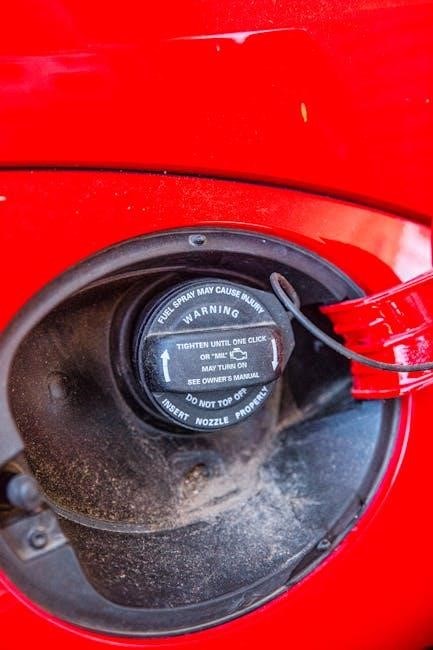Fellowes Shredder Instruction Manual: A Comprehensive Guide
This guide provides a comprehensive overview of Fellowes shredders. It covers critical aspects such as understanding different models, initial setup, and troubleshooting common issues like paper jams. You’ll also find valuable information about safety precautions, maintenance, and warranty details to maximize your shredder’s lifespan.
Understanding Your Fellowes Shredder Model
To fully utilize your Fellowes shredder, it’s crucial to understand its specific capabilities and features. Fellowes offers a diverse range of shredder models, each designed for different needs and usage levels. Identifying your specific model is the first step toward ensuring proper operation and maintenance. Many models are available such as Fellowes P-12C, Fellowes P-35C, Fellowes P-40, Fellowes P400C, Fellowes P400C-2, Fellowes P-45C and Fellowes P-48C.
Refer to the user manual that came with your shredder. The manual contains detailed information about your model’s specifications, including its shredding capacity (the number of sheets it can shred at once), security level (strip-cut, cross-cut, or micro-cut), and recommended usage. Understanding these specifications will help you avoid overloading the shredder or using it for materials it’s not designed to handle.
The manual also outlines any specific features or settings unique to your model, such as automatic start/stop, auto-reverse, or energy-saving modes. Familiarizing yourself with these features will allow you to optimize your shredding experience and ensure efficient operation. Additionally, the manual will provide guidance on compatible waste bags and any specific maintenance requirements for your particular model. Remember to locate your product CRC for accessing manuals and support online.

Initial Setup and Operation
Before you begin using your Fellowes shredder, proper initial setup is essential for optimal performance and longevity. First, carefully unpack the shredder and remove all packaging materials. Ensure that all components are present and undamaged. Refer to the user manual for a detailed parts list and assembly instructions, if required for your specific model. Place the shredder on a stable, level surface in a well-ventilated area.
Next, connect the power cord to a grounded electrical outlet. Ensure the power switch is in the “OFF” position before plugging it in. Some models come ready to use, but it’s always wise to double-check. Locate the power switch, which is usually found on the back or side of the shredder. Familiarize yourself with the location of the power switch for easy access in case of emergencies.

To begin operation, ensure the waste bin is properly inserted and aligned. Some models have a sensor that prevents operation if the bin is not in place. If your shredder uses waste bags, insert a compatible Fellowes waste bag (e.g., Fellowes 36054 or 36053) for easy disposal. Once the setup is complete, switch the power switch to the “ON” position and follow the instructions in your manual to start shredding.
Paper Jam Troubleshooting
Paper jams are a common issue with shredders, but they can usually be resolved quickly. If your Fellowes shredder experiences a paper jam, the first step is to immediately stop the shredder. Locate the power switch and turn it to the “OFF” position. This will prevent further damage to the shredder and ensure your safety.
Next, carefully unplug the shredder from the power outlet. This is crucial to avoid any electrical hazards during the troubleshooting process. Once the shredder is unplugged, examine the shredder opening to identify the location of the jam. If the jammed paper is easily accessible, gently try to remove it by hand. Be cautious not to force the paper, as this could cause further damage.
If the paper is not easily removable, consult your user manual for specific instructions on clearing paper jams. Some models have a reverse function that can help dislodge the paper. If your shredder has this feature, try using it to see if it helps to loosen the jam. If the jam persists, you may need to remove the shredder head to access the jammed paper more easily. Always refer to your manual for safe and proper disassembly instructions.
Using the Correct Waste Bags
Selecting the appropriate waste bags for your Fellowes shredder is essential for maintaining optimal performance and ensuring hassle-free disposal of shredded materials. Fellowes recommends using specific waste bags designed for their shredder models to prevent issues like bag slippage, tearing, and difficulty in emptying the shredder bin.
Refer to your Fellowes shredder’s user manual to identify the correct waste bag model number. Using the wrong size or type of bag can lead to several problems. An oversized bag may not fit properly in the bin, causing it to bunch up and interfere with the shredding mechanism. Conversely, an undersized bag may not hold enough shredded material, requiring more frequent emptying.
Fellowes typically offers waste bags that are specifically designed for their shredders, ensuring a secure fit and preventing leaks. These bags are often made from durable materials that can withstand the weight and sharpness of shredded paper. Using genuine Fellowes waste bags can also help to extend the life of your shredder by preventing dust and debris from accumulating in the motor and other internal components. Regularly replacing the waste bag is a simple yet important maintenance task that will keep your shredder running smoothly.
Safety Precautions and Warnings
Operating a Fellowes shredder requires adherence to crucial safety precautions to prevent injury and ensure the longevity of your device. Always read the entire instruction manual before operating the shredder to fully understand potential hazards and proper usage guidelines. Never insert fingers or other objects into the shredder opening, as this can result in severe injury.
Keep loose clothing, jewelry, and hair away from the shredder to avoid entanglement. Ensure the shredder is placed on a stable, level surface to prevent tipping or accidental activation. Children should never be allowed to operate or be near the shredder unsupervised. Always disconnect the power cord before cleaning, moving, or performing any maintenance on the shredder.
Be mindful of the shredder’s duty cycle, which is the amount of time it can run continuously before needing a cooling period. Overloading the shredder or exceeding the duty cycle can cause overheating and damage to the motor. If the shredder starts to overheat, immediately turn it off and allow it to cool down before resuming use. Avoid shredding materials beyond the shredder’s capacity, such as thick cardboard or metal objects, as this can cause jams and damage the cutting blades. By following these safety precautions, you can ensure a safe and efficient shredding experience.
Maintenance and Cleaning Procedures
Regular maintenance is essential for ensuring the optimal performance and longevity of your Fellowes shredder. Keeping the cutting blades lubricated is crucial for smooth operation and preventing paper jams. Fellowes recommends using shredder oil regularly, typically after each emptying of the waste bin, or at least twice a month with regular use. Apply the oil directly to the cutting blades by dispensing it across the paper entry slot.
In addition to lubrication, cleaning the shredder’s exterior is important for maintaining its appearance and preventing dust buildup. Use a soft, damp cloth to wipe down the housing and control panel. Avoid using harsh chemicals or abrasive cleaners, as these can damage the finish. To remove paper dust and debris from the internal components, you can use a vacuum cleaner with a brush attachment. Carefully vacuum around the cutting blades and inside the waste bin area.
Empty the waste bin frequently to prevent it from overfilling, as this can cause paper jams and strain the motor. Use Fellowes waste bags designed specifically for your shredder model to ensure proper fit and easy disposal. Periodically inspect the shredder for any signs of wear or damage, such as loose screws or frayed cords. If you notice any issues, contact Fellowes customer support for assistance. By following these maintenance and cleaning procedures, you can keep your Fellowes shredder in top condition for years to come.
Operating Different Fellowes Shredder Types
Fellowes offers a variety of shredder types designed for different needs, each with its own operating nuances. Personal shredders, like the P-12C or P-35C, are ideal for home use and typically feature a straightforward interface with a simple on/off switch and a reverse function for clearing jams. These models generally have a lower sheet capacity and are designed for occasional use.

For small office environments, Fellowes offers models like the P-40 or P-45C, which provide a higher sheet capacity and faster shredding speeds. These shredders often include features such as auto-start/stop and jam protection technology. Some models, like the P400C or P400C-2, are designed for heavier use and may include continuous operation capabilities.
When operating any Fellowes shredder, it’s crucial to consult the user manual for specific instructions and safety precautions. Ensure the shredder is placed on a flat, stable surface and that the waste bin is properly installed. Before shredding, remove any paper clips, staples, or other objects that could damage the blades. Always adhere to the shredder’s sheet capacity to prevent jams. If a jam occurs, use the reverse function or follow the troubleshooting steps outlined in the manual. By understanding the specific features and operating procedures of your Fellowes shredder type, you can ensure safe and efficient shredding.
Warranty Information and Support
Fellowes shredders come with a limited warranty that protects against defects in materials and workmanship. The specific terms of the warranty, including the duration and coverage, vary depending on the model. Typically, the warranty covers the cutting blades for a longer period than other components. To determine the exact warranty coverage for your shredder, refer to the warranty information included in the user manual or on the Fellowes website.
If you experience any issues with your Fellowes shredder during the warranty period, you may be eligible for repair or replacement. To initiate a warranty claim, you will likely need to provide proof of purchase, such as a receipt or invoice. Contact Fellowes customer support through their website or by phone to begin the claim process. Be prepared to describe the problem you are experiencing and provide the model number and serial number of your shredder.

Fellowes also offers a range of support resources to help you troubleshoot problems and maintain your shredder. Their website features FAQs, troubleshooting guides, and instructional videos. You can also download user manuals and find contact information for customer support. If you are unable to resolve the issue yourself, Fellowes may be able to provide repair services or recommend authorized service centers. Always refer to the official Fellowes resources for accurate and up-to-date information regarding warranty and support.
Locating Your Product CRC for Manuals
To access specific manuals, documentation, drivers, and software for your Fellowes shredder, you will often need to locate your product’s CRC (Customer Reference Code). The CRC is a unique identifier that helps Fellowes identify your exact shredder model and provide the correct resources.
The CRC is typically printed on a label affixed to the shredder itself. Common locations for this label include the back or bottom of the shredder unit, inside the waste bin compartment, or on the original packaging. The label may also contain other important information such as the model number, serial number, and manufacturing date.
Once you have located the CRC, you can enter it into the search box on the Fellowes website’s support page. Alternatively, you may be able to browse the product category and select your shredder model from a list. Entering the CRC ensures that you are accessing the correct manual and other resources that are specific to your shredder.
If you are unable to find the CRC on your shredder, you can try contacting Fellowes customer support for assistance. They may be able to help you identify your shredder model based on other information, such as the model number or a description of the shredder’s features. Having the correct CRC will streamline the process of finding the information you need.
Disposal Instructions
When the time comes to dispose of your Fellowes shredder, it is essential to do so responsibly and in accordance with local regulations. Shredders contain electronic components and materials that may require special handling to minimize environmental impact.
Before disposing of your shredder, it is recommended to remove any remaining shredded paper or waste. Empty the waste bin completely and ensure that no paper is lodged within the shredding mechanism. Disconnect the power cord from the electrical outlet and unplug any other connected devices.
Check with your local waste management authority or recycling center to determine the proper disposal methods for electronic waste (e-waste). Many communities have designated collection sites or events for e-waste, where you can safely dispose of your shredder. These facilities ensure that the shredder is properly recycled and that hazardous materials are handled in an environmentally sound manner.
If your local area does not have specific e-waste recycling programs, you may be able to donate the shredder to a charitable organization or school. Some organizations may be able to repair or repurpose the shredder, extending its lifespan and reducing waste. Alternatively, you can contact Fellowes directly to inquire about their recycling or trade-in programs.
By following these disposal instructions, you can help protect the environment and ensure that your Fellowes shredder is disposed of responsibly.


